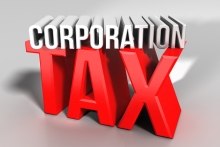
On 1st April, 2023, Britain’s international Corporation Tax (CT) ranking changed dramatically: from a competitive ninth lowest position in the OECD, to ninth highest with CT receipts expected to reach record levels, boosting Treasury income by £50 billion.
Though Jeremy Hunt’s ‘Ides of March’ Budget presented him with an opportunity to reconsider adding to business’s burgeoning tax liabilities, ultimately he decided against it. Accordingly, from 1st April CT increased to 25%, although the existing 19% level will remain for companies reporting annual profits up to £ 50,000.
The new 25% rate will apply to companies with annual profits of £250,000 and above. Between the two rates, taper relief will apply, with CT levied at 26.5%.
Chart One provides examples of the additional CT companies must pay on annual profits from the 2023-24 tax year.
|
Annual Profits (£)
|
Current CT liability (19%) | CT liability from April 2023 | Additional CT payable |
| 55,000 | 10,450 | 10,825 | 375 |
| 85,000 | 16,150 | 18,775 | 2,625 |
| 125,000 | 23,750 | 29,375 | 5,625 |
| 175,000 | 33,250 | 42,625 | 9,375 |
Examples of how the new CT liability on profits of between £50,000 and £250,000 will be calculated are shown in Chart Two:
| Annual profits |
Tax on first £50,000 (19%)
|
Tax on profits > £50k but < £250k (26.5%) | Total CT liability |
| £85,000 | £9,500 | £9,275 | £18,775 |
| £125,000 | £9,500 | £19,875 | £29,375 |
Despite the prospect of an increase in the tax burden, however, directors and business owners have an opportunity to legitimately reduce profits – and accompanying CT liability – while simultaneously boosting their pensions.
Company owners can make contributions to their SIPP directly from pre-taxed company income, thereby reducing income tax and NIC plus the company’s employer national insurance liability on the contribution. Crucially, direct SIPP contributions reduce a company’s profits and, therefore, its CT liability. With this liability scheduled to rise by 31% next month, many business owners are considering the possible advantages of making annual pension contributions through their companies, particularly as the Chancellor announced a new annual allowance of £60,000, up from £40,000.
Utilising a Self-Invested Personal Pension (SIPP) as the conduit for company-funded pension contributions enables the platform to take advantage of a commercial property market offering a plentiful supply of opportunities.
The current supply of vacant office space exceeds demand, a situation which is putting pressure on rent levels. It’s a similar story on the high street where bricks and mortar retailers have suffered from shoppers’ predilection for buying online.
This backdrop appears unlikely to improve in the foreseeable future. According to a Reuters report, commercial property values fell by 13.3% last year, virtually wiping out the gains (13.8%) of 2021.
Surveying the commercial property market outlook for 2023, RICS’ Q4 survey reports mixed rental expectations. Forecasts for prime office rental growth remain positive, but the organisation believes that the rental outlook for secondary locations is less bullish.
Christine Hallett, Managing Director of Options UK, the independent SIPP and corporate pensions provider, believes the conjunction of April’s sharp rise in Corporation Tax, coupled with a noticeable fall in commercial property values, offers business owners and directors a rare and potentially valuable opportunity.
“Following confirmation that marginal rates of Corporation Tax will soon exceed 26%, a level that will punish successful companies, we have seen a significant rise in the number of enquiries from business owners who wish to reduce profitable balances on their P&L by making pre-tax corporate contributions to their respective SIPPs,” says Ms Hallett.“A burgeoning number of business people recognise the combined opportunity this creates: to acquire commercial property through their SIPP for occupation by their own company while reducing a Corporation Tax liability.”“There has also been a marked increase in ‘syndicated SIPPs’ where a number of business owners and directors form partnerships to acquire much larger commercial properties currently distributing impressive rental yields,” adds Ms Hallett.
Should the value of the business owner’s SIPP be less than the cost of a commercial property, the SIPP may borrow up to 50% of its value, less any existing borrowing, to help fund the property purchase.
Owners and directors can give the pension contribution procedure greater cogency by formally determining how they're remunerated, creating an employment contract which establishes the different elements which make up their remuneration to include pension contributions.
One further benefit of this arrangement arises if the property is eventually sold. Profits made from the sale of premises are potentially taxable, although no such charge arises should the SIPP sell the property.
From April, a company recording annual profits of £175,000 will pay 5.35% more (£9,375) in CT than it would have during the 2022-23 tax year. However, business owners reporting the same level of profits but making the maximum allowable employer SIPP contribution of £60,000 would reduce their company profits by the same amount, cut the business’s CT liability and simultaneously boost their personal pension pot.
While a lower CT liability remains, this opportunity for business owners and directors to reduce a significant tax liability and enhance their respective pension pots should not be overlooked.
